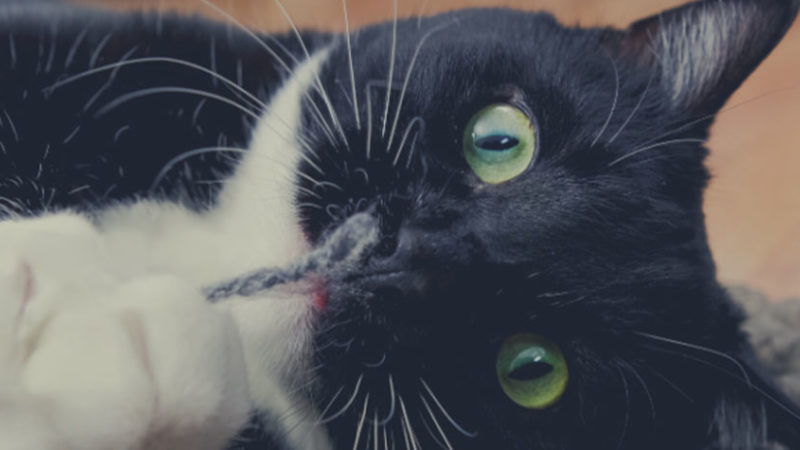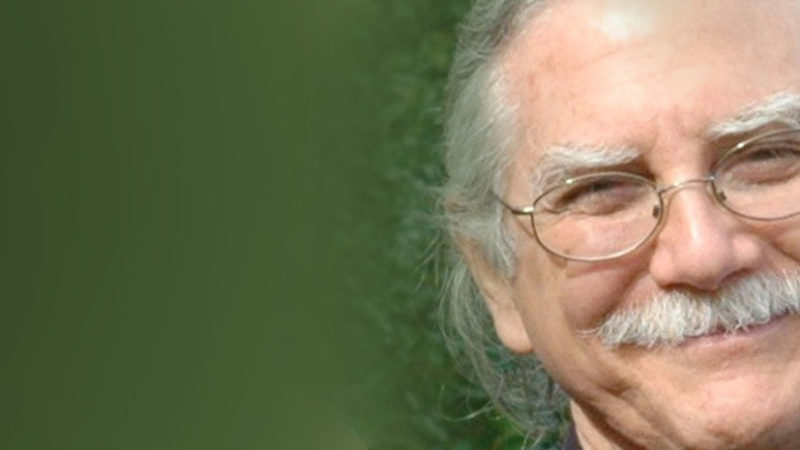-
E117: The Real Work: Letting Go from Within
Michael Singer — October 2, 2025
True spirituality isn’t about mystical experiences or lofty ideals—it’s about honestly facing...
-
Once More: Reflections on Reincarnation and the Gap Between Lives
Tami Simon — September 26, 2025
In this special reflection episode of Insights at the Edge host Tami Simon looks back on her...
-
Honey Tasting Meditation: Build Your Relationship with Sweetness
There is a saying that goes “hurt people hurt people.” I believe this to be true. We have been...
Written by:
Amy Burtaine, Michelle Cassandra Johnson
-
Many Voices, One Journey
The Sounds True Blog
Insights, reflections, and practices from Sounds True teachers, authors, staff, and more. Have a look—to find some inspiration and wisdom for uplifting your day.
Standing Together, and Stepping Up
Written By:
Tami Simon -
The Michael Singer Podcast
Your Highest Intention: Self-Realization
Michael Singer discusses intention—"perhaps the deepest thing we can talk about"—and the path to self-realization.
This Week:
E116: Doing the Best You Can: The Path to Liberation -
Many Voices, One Journey
The Sounds True Blog
Insights, reflections, and practices from Sounds True teachers, authors, staff, and more. Have a look—to find some inspiration and wisdom for uplifting your day.
Take Your Inner Child on Playdates
Written By:
Megan Sherer
600 Podcasts and Counting...
Subscribe to Insights at the Edge to hear all of Tami's interviews (transcripts available, too!), featuring Eckhart Tolle, Caroline Myss, Tara Brach, Jack Kornfield, Adyashanti, and many more.
Most Recent
How to Stop Turning Your Back on Your Trauma
We Suffer Ahead of Time
There is a kind of pain that is born from the anticipation of something that we know will happen but has not yet happened. We suffer a lot for things that have not yet happened. We anticipate, in excruciating detail, the pain of a visit to the dentist or a planned surgery. We spend several months suffering the pain of giving birth. We suffer for the death of a loved one months before cancer takes their life. We suffer for things that do not yet hurt, in such a way that when real pain does arrive, our body and mind are already exhausted.
Our bodies are wise; this we have said already. Our bodies and our minds feel the impulse to repair the damage detected. When we feel pain, we activate a repair system with the objective of recovering the balance lost. But we must take care not to end up like Peter in the tale of “Peter and the Wolf”: he warned so many times about the wolf coming, without it being true, that when it did truly arrive, nobody believed him. If we activate the alert mechanism in the face of pain ahead of the time, then, when we need them the most, we won’t have any resources left to cope with it.
The source of emotional pain is often caused by:
- Adversity
- Frustration
- Disappointment
- Unexpected change
- Judgments and thoughts
- Reality
- Imagination
- Fear
- Anticipation
Suffering and adversity are just part and parcel of life. Any day we might experience the greatest and most unexpected of tragedies. But what really matters is not what could or might happen to us—which can be just about anything—but what is actually happening to us. When we speak about misfortune and adversity, we must speak about probabilities, not possibilities, namely the likelihood that any of the adversities we are exposed to might occur. Is there a chance that a piece of space debris might fall from outer space and split my head open? I don’t have the evidence to deny it. However, if I am going to be afraid of anything, in my case it would be the cows I meet in the mountains when I’m out for a run because it’s far more likely that I will be trampled by a cow than get hit by a piece of space debris.
So, if you ever ask yourself, “Why me?” remember that we are fragile; that we live in a hostile environment; and that sometimes, with the behaviors and the decisions that we make—or don’t make—we are taking risks that can lead us to adversity. However, at other times, the cruelest fate hits us with adversity.
Building a Wall Is Not the Solution
Some people think that the solution to live more at ease is to build a wall to defend themselves. Do not make that mistake; the wall will defend you from exterior aggressions, but it will also prevent you from enjoying the wonderful things around you. If you build a wall, you will prevent disappointment, but you will feel bitterly lonely. A wall can protect you from fear of change but will create an inability to adapt to different situations. The wall will provide you with safety, but it will also make you a person who is dependent on its protection; it will make you insecure and fearful of what will happen when that wall disappears. I encourage you to build, instead of a wall, a library full of resources to help you maintain the level of emotional strength that you need.
What’s more, when we attempt to protect ourselves by adopting strategies that are damaging, and when we wear armor, we disconnect emotionally from the people around us and from reality. Building a wall is never the solution because it will not protect us from that pesky space debris looming above our heads. Don’t forget: prudence is good, fear is not.
Reflection Exercise
I encourage you to do an exercise. Analyze the pain you are experiencing and try to identify its source. Don’t leave it for tomorrow. Don’t click to the next site just yet. Just pick up a notebook and a pencil, find a quiet place right now, and reflect. Take action, because it’s up to you to do something about this. Nobody will do it for you.
Learn more about this powerful practice of healing trauma in Kintsugi: The Japanese Art of Embracing the Imperfect and Loving Your Flaws by Tomás Navarro.
Tomás Navarro is a psychologist who loves people and what they feel, think, and do. He is the founder of a consultancy practice and center for emotional well-being. He currently splits his time between technical writing, training, consultancy, conferences and advisory processes, and personal and professional coaching. He lives in Gerona and Barcelona, Spain.
Theresa Reed: Monkey Mind
They say that animals often come to resemble their owners. Or maybe it’s the other way around. I am not sure where that statement came from, but I would probably say there is a nugget of truth to it. Perhaps we do become more like our critters, or more likely, we simply learn from them.
A decade ago, my husband and I adopted a little black cat from the local shelter. As soon as they plopped him in our hands, he began to purr like a motor. We bundled him up, took him home, and named him Monkey.
This name seemed to fit him much better than his original moniker, Phantom. Monkey wasn’t a cat who liked to hide away, and he wasn’t very stealthy either. Instead, he was restless, animated, and liked to play rough. Always in movement, he could barely sit still long enough for a picture. He’s got a true “monkey mind.”
I hate to admit this, but in a way we’re a lot alike.
Like Monkey, I am easily distracted. I blame this on my Gemini ways, but the truth is that’s not an excuse for having too many projects running at the same time with all the technology in the world clamoring for my attention. The blips and dings that alert me that I’ve got mail or texts or other such things keep me in a state of high alert. “What’s happening? What’s going on?” Or, more accurately, “What did I miss?”
Like a pinball whizzing around the flippers and bumpers, my brain is in constant motion. Sometimes I’ve found myself amazed that I was able to get anything done at all.
My writing sessions were punctuated by petting sessions, and cooking a meal required one hand on the spatula while another held a laser pointer to keep Monkey from biting my heels. Disruption via feline was a way of life around my house, so, as you can imagine, it wasn’t easy for a focus-challenged person like myself to remain present much of the time.
One day, I was tapping away on the computer when I noticed Monkey staring down a bug. He was poised to pounce, eyes wide, and completely still. The bug wasn’t moving. Neither was Monkey. This was a total showdown between cat and bug—and neither was going to move until the time was right.
Fascinated, I stopped what I was doing to watch this duel unfold.
The stare-down continued for a few minutes. This cat wasn’t going to flinch until he witnessed a glimmer of activity. Finally, I saw a flicker of movement as the bug slowly lifted his leg. Monkey’s eyes widened as he wriggled his bottom. Suddenly he pounced on the hapless bug, and in an instant, it was over. The bug was lying face up, with no sign of life. Monkey sniffed around it for a second, then sauntered away. The job was done and now it was time for a nap in the sun.
I found myself pondering this long after the deed was over.
How could this cat, who detests the house rules and who seems to be in constant squirm motion, remain so deeply engrossed? How is it that Monkey was able to deftly finish his work while I sat at my desk, still stuck on finding the first opening sentence for my latest project?
The truth was staring me in the face as the little familiar beep that alerted me to an incoming text pulled me away from my work.
I had created a maelstrom of technology and distraction around me. This was preventing me from effectively “killing the bug.” If I was going to be prolific, effective, and calm in both my work and my spiritual practice, I needed to set myself up for success. It was time to commit to making my world distraction-free so I could tame my own monkey mind.
This is an excerpt from a story written by Theresa Reed and featured in The Karma of Cats: Spiritual Wisdom from Our Feline Friends, a compilation of original stories by Kelly McGonigal, Alice Walker, Andrew Harvey, and many more!
Theresa Reed has been a professional, full-time tarot reader for more than 25 years. A recognized expert in the field, she has been a keynote presenter at the Readers Studio, the world’s biggest tarot conference, and coaches tarot entrepreneurs via numerous online courses and her popular podcast, Talking Shop. Theresa lives in Milwaukee, Wisconsin. For more, see thetarotlady.com.



Michael Singer: Living From a Place of Surrender
Michael Singer is a spiritual teacher, entrepreneur, and the bestselling author of the spiritual classic The Untethered Soul. He has collaborated with Sounds True to release the online course Living from a Place of Surrender: The Untethered Soul in Action. In this episode of Insights at the Edge, Tami Simon speaks with Michael about the core idea of his teachings: that it is only through complete surrender to the essence of the moment that we experience life’s full potential. They talk about what this sense of surrender actually means when it comes to decision-making and day-to-day activities, as well as how to recognize when we are still clinging to resistance. Michael explains how to take a “witness position” and let go of the arbitrary attachments that inhibit surrender. Finally, Tami and Michael discuss the application of these ideas to those things we truly value, including bringing the idea of surrender to social and environmental activism. (63 minutes)
Customer Favorites
Grateful Living in the “Double Realm”
Brother David Steindl-Rast is an internationally renowned author, lecturer, and pivotal member of the monastic renewal movement. A monk in the Benedictine tradition, Brother David is also an expert in Zen Buddhism and a tireless advocate for building bridges between Eastern and Western religious traditions. With Sounds True, Brother David created the audio program The Grateful Heart. In this episode of Insights at the Edge Tami Simon and Brother David talk about the innate longing that drives spiritual study and is the impetus for seeking out a monastic life. Tami and Brother David explore the concept of the “Double Realm” that lies beyond standard concepts of time and existence, as well as how practicing gratitude can be a doorway to that realm. Finally, Brother David considers the future of religion and spirituality as he enters his ninetieth year of life.
(62 minutes)
Helen Riess: Seven Keys to Increase Empathy
Dr. Helen Riess is an associate clinical professor of psychiatry at Harvard Medical School and the director of the Empathy and Relational Science Program at Massachusetts General Hospital. With Sounds True, she has published The Empathy Effect: Seven Neuroscience-Based Keys for Transforming the Way We Live, Love, Work, and Connect Across Differences. In this episode of Insights at the Edge, Tami Simon speaks with Helen about the development of the E.M.P.A.T.H.Y. program—a method for teaching and promoting empathy that draws on neuroscience and physiology. They talk about how Helen became interested in the science of empathy and why recent research into the subject has yielded such positive results. Helen walks listeners through each step of the E.M.P.A.T.H.Y. process, highlighting the benefits of more actively attending to every social interaction. Finally, Helen and Tami discuss the active training of empathy in education, business, and the medical community, emphasizing why these skills are necessary for the survival of human civilization. (64 minutes)
Tami’s Takeaway: A very simple technique that Dr. Helen Riess teaches for establishing empathic connection with people is to mentally note the eye color of the person when you first meet. This is a technique that she teaches to doctors and medical practitioners who are often moving quickly in a task-oriented way, not pausing to make genuine contact with the people they are serving. (Sound familiar, anyone?) My takeaway is to employ this technique in the office at Sounds True with the 130 people who work here. The early reports indicate that these experiments in noting eye color (even during hallway conversations and in meetings) have quickly created a sense of real connection—moments that I cherish.
What Causes Reactivity and How to Navigate it Skillful...

Our shadow-bound conditioning shows itself most often through reactivity. When we’re reactive, we’re automatically reverting to and acting out conditioned behavior, usually in ways that are emotionally disproportionate to what’s warranted in a given situation.
Reactivity is the knee-jerk dramatization of activated shadow material. Self-justifying and far from self-reflective, reactivity features a very predictable take on what’s going on, which we proceed with even if we know better.
The signs of reactivity include:
An exaggerated attachment to being right. If someone points out this attachment to us when we’re being reactive, it usually only amplifies our righteousness.
Emotional distortion and/or overload. More often than not, this behavior gets quite melodramatic. We may use emotional intensity to back up what we’re doing.
Using the same words and ideas from previous times we’ve been triggered. It’s as if we’re on stage saying our lines as dictated by the same old script. We’re acting and re-acting, even when we know we’re doing so.
A lack of—or an opposition to—self-reflection. The refusal to step back, even just a bit, from what’s happening fuels the continuation of our reactivity.
A loss of connection with whomever we’re upset with. Our heart closes.
A loss of connection with our core. We’re immersed instead in our reactivity.
Here’s an example of how to skillfully—and nonreactively—handle reactivity. Imagine you’re embroiled in a reactive argument with your partner or a close friend. You’re dangerously close to making a decision about your relationship to them that you vaguely sense you’ll later regret, but damned if you’re going to hold back now! After all, don’t you have a right to be heard?
Things are getting very edgy. Then, rather than continuing your righteous, over-the-top dramatics, you admit to yourself that you’re being reactive. Period. You step back just a bit from all the sound, fury, and pressure to make a decision about your relationship with this person. You’re still churning inside, but the context has shifted. You’re starting to make some space for the reactive you instead of continuing to identify with it. There’s no dissociation here — just a dose of healthy separation, some degree of holding space for yourself, perhaps even some trace of emerging care for the other person.
On the outside, you’re slowing down and ceasing to attack the other, saying nothing more than what you’re feeling, without blaming the other for this. You’re starting to allow yourself to be vulnerable with the other. You’re interrupting your own reactivity.
Your intuition begins to shine through all the fuss. You start to realize that, while you were being reactive, your voice sounded much like it did when you were seven or eight years old. The same desperation, the same drivenness, the same cadence. You were hurting considerably then and trying to keep your hurt out of sight, because earlier times of expressing it had been met with parental rejection and shaming.
You’re still on shaky ground, though, and could still easily slip back into your reactive stance. Just one more shaming or otherwise unskillful comment from the other could do the trick. So you soften your jaw and belly, bend your knees slightly, and take five deep breaths, making sure that you count each breath on the exhale. You know from previous experience that these somatic adjustments will help settle you; they are your go-to calming responses for stressful moments.
As the out-front reality of your reactivity is now in clear sight, you feel shame. Some of this is a beneficial shame, activating your conscience, letting you know that you crossed a line with the other and that a genuine expression of remorse is fitting. You say you’re sorry, with obvious vulnerability. Sadness surfaces in you. You don’t make excuses for your reactivity. Instead, you make your connection with the other more important than being right.
And a very different kind of shame also arises, one that’s far from beneficial. This shame activates not your conscience but your inner critic (heartlessly negative self-appraisal). It’s aimed not at your behavior but at your very being, taking the form of self-flagellation for having slipped—a self-condemnation that, if allowed to run free, mires you in guilt and keeps you from reconnecting with the other. You acknowledge the presence of this toxic shame, saying to yourself that your inner critic is present. It’s not nearly as strong as it usually is, fading quickly as you name it. You choose to address it in depth later on, outside of the argument you were just having, as part of your ongoing shadow work. Reconnecting with the other is a priority now, and it’s happening, bringing relief and gratitude to you both.
Excerpted from Bringing Your Shadow Out of the Dark: Breaking Free from the Hidden Forces That Drive You by Robert Augustus Masters.
Robert Augustus Masters, PhD, is an integral psychotherapist, relationship expert, and spiritual teacher whose work blends the psychological and physical with the spiritual, emphasizing embodiment, emotional literacy, and the development of relational maturity. He is the author of thirteen books, including Transformation through Intimacy and Spiritual Bypassing. For more information, visit robertmasters.com.
Buy your copy of Bringing Your Shadow Out of the Dark at your favorite bookseller!
Sounds True | Amazon | Barnes & Noble | Indiebound







